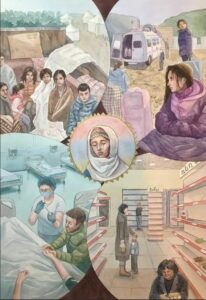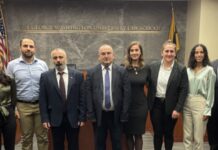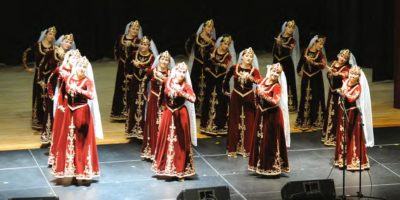By Raffi Bedrosyan
In a previous article (Dec. 28, 2013 – Emulate Zoryan Institute and Bring Armenian History in Turkish to Turks) about the approaching 2015 centennial of the Armenian Genocide, I had argued about the necessity of focusing the Armenians’ limited resources to support independent academic research, continuing to bring out the truth and facts of 1915 toward establishing a “common body of knowledge” between the Turks and Armenians. In this article, I will elaborate on the necessity to deliver those 1915 facts and truth directly to the Turkish people, will outline some of the obstacles created by the denialist policies of the Turkish state, and finally, will provide a few suggestions for the Turkish state to consider by 2015.
Meaningful dialogue between two conflicting parties can only happen if both parties are aware of the facts and the truth. Even though the Turkish state has not allowed the truth and the facts of 1915 to come out until recently, there are now clear signs that the taboos about 1915 are finally broken and that there is a “common body of knowledge” emerging among the Turkish opinion makers and ordinary citizens. For four generations, the Turkish citizens were brainwashed about 1915 by the state education system and the media. However, Turkish people can no longer be defined as a homogenous, uniform group. Clashes between the Turkish state and the sizable Kurdish/Alevi population, as well as the prosecution and punishment of the “deep state” leaders who ruled Turkey until a few years ago, have become recent factors in questioning the state version of history regarding the 1915 events. A few bright personalities in politics, academia, media and literature, i.e. opinion makers, have advocated increased democratization, freedom of speech and minority rights; moreover, they have acknowledged the truth about 1915 and demanded that the state also do so. There is now a small but fast increasing segment of the population which wants the state to face the past about the 1915 events.
To date, there have been few attempts of dialogue between the Armenian world and this liberalized segment of the Turkish population and opinion makers. Apart from the activities of the Hrant Dink Foundation based in Istanbul, the only contacts by Armenians have been through a few individuals in academia, film, media, music and culture, and organizationally by the Zoryan Institute in the academic field, by the Armenian NGO Civilitas through its recently opened office in Istanbul, and some recent political exchanges between Kurdish political parties and representatives of the Armenian Revolutionary Federation. Armenian academia, NGOs and opinion makers should aim at direct contact with their Turkish counterparts in conveying the truth in Turkish, through jointly organized conferences, seminars, TV programs, films and translated publications. For example, ordinary Turks should find out about the courageous Turkish government officials who resisted the inhumane government decisions to annihilate the Armenian population in 1915. They should learn about the fate of the properties left behind by the annihilated Armenians, including hundreds of thousands of houses, fields, shops, warehouses, factories, mines, churches and schools, all confiscated by the state, Ittihat Terakki leaders or local Moslem notables. They should understand that most of the Ataturk House Museums scattered all over Anatolia belonged to deported or murdered Armenian citizens of the Ottoman state. They should be reminded that the very residence where the Turkish President sits today in Ankara, was once owned by an Armenian family.
Of course, the Turkish state will continue using all its resources to prevent its citizens from finding out the truth. Notwithstanding the boasts of the Turkish Prime Minister Erdogan that their archives are open and they have nothing to hide, the reality is that their archives are not entirely open and have gone through two major cleanups. The first cleanup and destruction of files was back in 1918, when the Ittihat Terakki leaders escaped from Istanbul in a German warship in order to avoid prosecution as war criminals, carrying several trunkloads of documents with them. At the same time, the main planner of the Armenian deportations and massacres, Special Organization Chief Bahattin Shakir also burned rooms full of documents related to their activities. The second purging was in the 1990s when the Ottoman Archives were reorganized, translated into modern Turkish and digitized. A team of diplomats, historians, retired ambassadors and military officers sifted through millions of documents with the objective of eliminating any incriminating reference to the Armenians. Recent Wikileaks documents indicate that the Ottoman archival documents, initially estimated at 50 million records, turned out to be more like 200 million and therefore, the intended purge could not be carried out effectively. Obviously, several thousand documents escaped scrutiny and a few prominent Turkish scholars like Taner Akçam, Umit Kurt and Ugur Ungor have been able to produce significant historic facts about the intended annihilation of the Armenians and confiscation of their properties, based only on the Ottoman archives. It was recently revealed that all researchers delving into the Armenian issue in the Ottoman archives were being tracked and monitored. If their work was deemed to be against the state version, there would be harassment and funding repercussions against them and the institutions where they worked/studied. Meanwhile, researchers who produce/falsify/create documents minimizing Armenian losses are encouraged and rewarded. In 2005, Murat Bardakci, an investigative journalist, published Talaat Pasha’s diary revealing that Talaat had kept detailed records about the numbers and destination of the deported Armenians, had tallied the loss of Armenians at 972,000, but had also stated that the total missing could exceed 1.2 million due to unaccounted relocations. During a recent TV talk show about history called Rear Window of History, Bardakci had invited a history professor from Sakarya University, a state sponsored ‘expert’ on the Armenian issue, where this expert announced that the archives show the Ottoman government took all precautions to care for the 300,000 Armenians temporarily deported ‘only’ from the eastern war front, that ‘only’ a few thousand died from illness, but most of them safely returned home after the war. Bardakci then confronted him by producing Talaat Pasha’s diary and the numbers that Talaat himself had quoted; the expert said he can only work with whatever is available in the state archives. He also announced that Turkish historians have now “proven” that all the genocide allegations are “fiction,” based on American Ambassador Morgenthau’s book, which was specifically produced as a propaganda tool to drum up support for the United States to enter the war. Even Bardakci found this expert’s comments embarrassing for Turkey, which would result in more ridicule internationally and weaken Turkey’s hand further in the eve of 2015.









